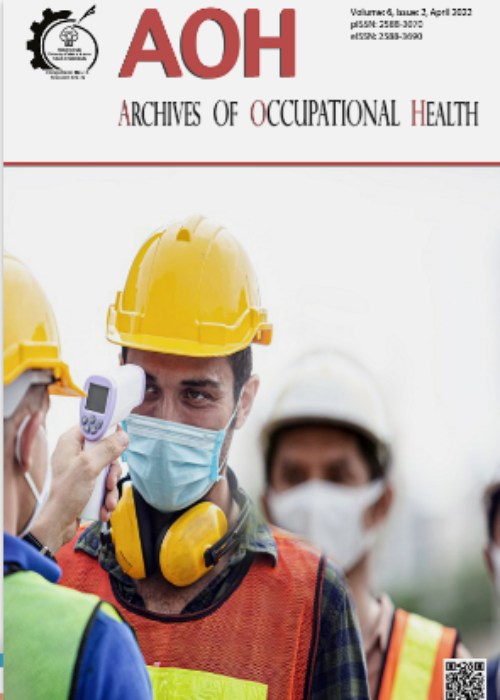Relationship of Lead Exposure with Workers' Blood Pressure and Blood Components: A Case Study
Lead is one of the most widely used metals in the industries and is the amplest metal element on the Earth’s crust. This metal disrupts the physiological processes of the body due to its accumulation in various tissues. The present study aimed to determining the association of lead exposure with blood pressure and blood components of the lead mine employees in Isfahan City, Iran.
In this cross-sectional study, 187 workers were investigated; they worked in the lead mines of Isfahan from January to April 2016. The staff was divided into two groups: one was exposed to lead and the other was the control group. The participants' general information was collected in worksheets, including age, work experience, work shift, body mass index, blood pressure, and smoking status. Sampling was carried out by active sampling using the NIOSH 7300 method. Blood samples were taken from all participants and their hematological parameters were evaluated, including red blood cell, platelet count, percent of lymphocytes, and volume of red blood cells.
The participants' age means were 34.06 (8.8) and 37.04 (11.48) years in the case and control groups, respectively. The time-weighted average concentration of lead in the breathing zone air of workers was 0.0533 mg/m3. The average systolic blood pressure was 12.01 (1.3) mmHg in exposed workers, while it was 11.78 (1.1) mmHg in the control group. The average diastolic blood pressure was 7.84 (0.71) mmHg in exposed workers and 7.73 (0.54) mmHg in control group. Statistical test results showed a significant difference between the case and control groups with regard to their systolic and diastolic blood pressure (P<0.05). Furthermore, no significant difference was observed between the lead-exposed and non-exposed groups with regard to the hematocrit and hemoglobin levels.
According to the results, lead exposure can cause metabolic changes in blood pressure and some of its features. Considering the importance of this issue, some preventive measures should be taken to maintain and improve the worker's health and well-being, such as increasing the workers' rest time, performing periodic examinations for them, as well as conducting safety workshops and training sessions.
-
The Relationship between Safety Climate Components and Occurrence of Unsafe Behaviors: A Case Study in a Chemical Industry
Ahmad Soltanzadeh, Mohsen Sadeghi Yarandi*, Goodarzi, Tahereh Kazemian, Reza Pourbabaki
Journal of Military Medicine, -
A Comparative Study of NERPA, RULA and LUBA Methods in Predicting the Risk of Upper Limb Musculoskeletal Disorders in the Household Manufacturing Industry
Mohsen Sadeghi Yarandi*, Goodarzi, Reza Pourbabaki, Sajjad Samiei
Journal of Occupational Hygiene Engineering,



